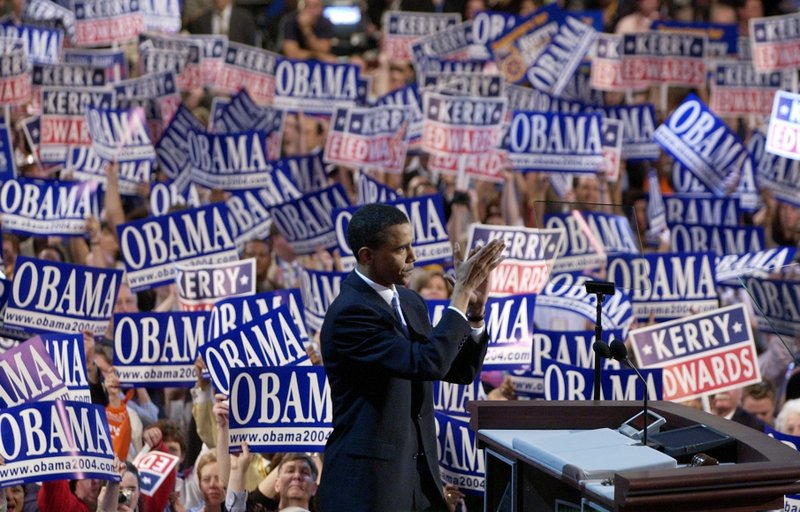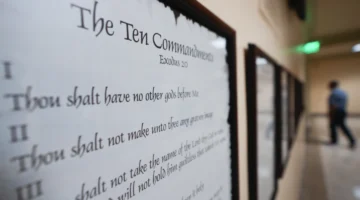As Obama accomplished policy goals, his party floundered
WASHINGTON (AP) — In boasting about his tenure in the White House, President Barack Obama often cites numbers like these: 15 million new jobs, a 4.9 percent unemployment rate and 74 months of consecutive job growth.
There’s one number you will almost never hear: More than 1,030 seats.
That’s the number of spots in state legislatures, governor’s mansions and Congress lost by Democrats during Obama’s presidency.
It’s a statistic that reveals an unexpected twist of the Obama years: The leadership of the one-time community organizer and champion of ground-up politics was rough on the grassroots of his own party. When Obama exits the White House, he’ll leave behind a Democratic Party that languished in his shadow for years and is searching for itself.
“What’s happened on the ground is that voters have been punishing Democrats for eight solid years — it’s been exhausting,” said South Carolina state Sen. Vincent Sheheen, who lost two gubernatorial campaigns to Nikki Haley, President-elect Donald Trump’s pick for ambassador to the U.N. “If I was talking about a local or state issue, voters would always lapse back into a national topic: Barack Obama.”
When Obama won the presidency, his election was heralded as a moment of Democratic dominance — the crashing of a conservative wave that had swept the country since the dawn of the Reagan era.
Democrats believed that the coalition of young, minority and female voters who swept Obama into the White House would usher in something new: an ascendant Democratic majority that would ensure party gains for decades to come.
The coalition, it turns out, was Obama’s alone.
After this year’s elections, Democrats hold the governor’s office and both legislative chambers in just five coastal states: Oregon, California, Connecticut, Rhode Island and Delaware. Republicans have the trifecta in 25, giving them control of a broad swath of the middle of the country.
The defeats have all but wiped out a generation of young Democrats, leaving the party with limited power in statehouses and a thin bench to challenge an ascendant GOP majority eager to undo many of the president’s policies. To be sure, the president’s party almost always loses seats in midterm elections. But, say experts, Obama’s tenure has marked the greatest number of losses under any president in decades.
“Obama just figured his important actions on policies like immigration and health care would solidify support, but that hasn’t really materialized,” said Daniel Galvin, a political science professor at Northwestern University and the author of a book on presidential party building. “He’s done basically the minimal amount of party building, and it’s been insufficient to help the party.”
It’s a political reality that Obama has only been willing to acknowledge publicly after his party’s devastating November losses. He’s admitted he failed to create “a sustaining organization” around the political force that twice elected him to office.
“That’s something I would have liked to have done more of, but it’s kind of hard to do when you’re also dealing with a whole bunch of issues here in the White House,” he said at his year-end press conference.
It is perhaps not surprising that Obama — a politician who promised a post-party era — turned out not to be a party stalwart.
Obama and his aides came into office neither beholden to his party’s establishment, nor particularly interested in reinforcing his party’s weak spots.
He electrified the 2004 Democratic National Convention with a speech seeking common cause over party differences. Four years later, he defeated Hillary Clinton, the pick of the party insiders, to win the Democratic presidential nomination.
In the White House, Obama’s failure to do the typical Washington schmoozing was a constant source of complaint among congressional Democrats, as was his reluctance to endorse down-ballot candidates and inability to parlay Organizing for Action, his grassroots organization, into a significant force.
State parties languished and the Democratic National Committee struggled with dysfunction and debt.
“We built this beautiful house, but the foundation is rotten,” said South Carolina Democratic Chairman Jaime Harrison, a candidate to lead the Democratic National Committee. “In hindsight we should have looked at this and said, ‘Maybe the state parties should be strong.'”
Toward the end of his presidency, Obama began doing more, stepping in to assist more than 150 state legislative candidates in October and campaigning across the country for Clinton.
He’s indicated he intends to make partisan politics a bigger piece of his post-presidential life. Aides say Obama will be closely involved in an effort to focus on drawing district lines more in the favor of Democrats.
The president’s advisers blame the losses on such structural trends. They point to a flood of Republican super PAC dollars and a resurgence of Republican political power in statehouses. That state-level dominance has given Republicans the ability to redraw district lines and created voting rules that could benefit their party for years to come.
The refusal by many Democrats to accept help from Obama in the 2010 and 2014 midterms was also a strategic mistake, they argue.
“Frankly, when people have asked, the president has been more than willing to engage,” said David Simas, Obama’s political director.
Some Democrats blame Obama for an executive agenda that highlighted social issues — such as transgender rights and access to birth control — over the economic anxiety still felt by many voters.
“The backlash to the Obama presidency was perhaps bigger than any of us really realized,” said Simon Rosenberg, president of the New Democratic Network, a Democratic think tank. “A lot of the story of this election was people feeling like the culture was evolving in a way that made it feel like they were no longer living in the country they grew up in.”
Others are focusing on the one clear truth of the November defeats: What worked for Obama just did not work for this party.
Perhaps the most remarkable twist of a shocking political season? Even as voters chose to elect a successor who vows to undo most of Obama’s legacy, his approval rating remains the highest it’s been since the spring of 2009.
___
Associated Press writer Josh Lederman contributed to this report.




No Comment